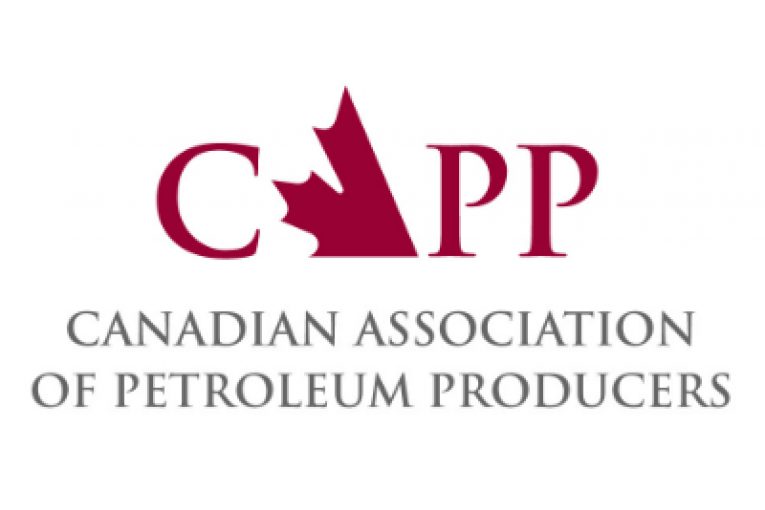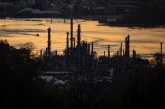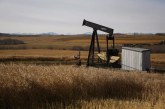
[ad_1]
CALGARY, AB, Jan. 13, 2021 /CNW/ – The Canadian Association of Petroleum Producers (CAPP) is forecasting a 14 per cent increase in upstream natural gas and oil investment in 2021. Capital spending in the sector is expected to be around $3.36 billion higher this year, reaching $27.3 billion, compared to an estimated total investment of $24 billion in 2020.
The planned investment for 2021, while increasing from the lowest levels in more than a decade, would halt the dramatic decline seen since 2014, when investment sat at $81 billion. This year’s forecast represents a stabilizing of industry investment and the beginning of a longer-term economic recovery.
The additional spending is primarily focused in Alberta and British Columbia, while numbers in Saskatchewan show modest improvement and offshore investment in Atlantic Canada is expected to remain relatively stable compared to 2020.
Conventional oil and natural gas capital investment for 2021 is forecast at $20 billion, up from an estimated $17.2 billion last year.
Capital investment in the oil sands is forecast at $7.3 billion in 2021, up from an estimated $6.7 billion total in 2020.
One year ago, CAPP’s initial forecast for 2020 expected investment to reach $37 billion; however, a crude oil price war between Russia and Saudi Arabia in March of 2020 and the global economic impacts of the COVID-19 pandemic contributed to an unprecedented 31 per cent drop in investment, wiping out more than $12 billion of planned spending.
The expected 2021 increase of investment into the Canadian economy is partly due to the availability of COVID-19 vaccine globally, which should lead to higher economic activity and increased energy demand. The International Energy Agency (IEA) projects the global economy will return to pre-COVID levels in 2021 while global energy demand is expected to reach its record high pre-crisis levels in early 2023. This growth offers significant opportunity for Canadian natural gas and oil producers as their access to global markets expands.
Other contributing factors to the capital spending increases are government supports introduced in 2020, including many at the provincial level.
In Alberta, upstream investment is expected to increase 18 per cent to total $11.8 billion in 2021 from an estimated $10 billion last year.
- In 2020, the Government of Alberta announced municipal tax relief for new wells drilled, eliminated the municipal Well Drilling Equipment Tax (WDET), and accelerated its corporate income tax reduction plan.
- The province released its first annual red tape reduction report, continuing its commitment on red tape reduction and helping to strengthen investment competitiveness by lowering the bureaucratic burden and reducing costs on industry.
- Alberta invested $1.5 billion in the Keystone XL pipeline, which lead to the starting of construction on the project. Keystone XL, along with the Trans Mountain expansion and Enbridge Line 3 pipeline projects also under construction, offer expanded market access for Canadian oil to global markets.
In British Columbia, growth in upstream investment for 2021 is forecast at about 29 per cent; up to $3.9 billion from an estimated $3 billion in 2020.
- The province’s support for Liquefied Natural Gas remains a driver for investment with the LNG Canada project under construction — one of the largest capital projects in Canadian history.
- B.C. took a step in addressing competitiveness concerns for trade exposed industries by setting benchmarks for its CleanBC Industry Incentive Program which recognizes industry’s leadership and will refund a portion of the provincial carbon tax (above $30/tonne). This is a first step to help better enable B.C. commodities to compete.
- In 2020, BC hydro reduced industrial electricity rates by one per cent and the province delayed its scheduled increase of the provincial carbon tax.
In Saskatchewan, 2021 upstream investment is forecast at a five per cent increase, up to $2.8 billion from an estimated $2.7 billion in 2020.
- Saskatchewan’s vision 2030 goal of increasing oil production by 25 per cent to 600,000 barrels per day, along with fiscal incentives that enhance investment attractiveness have laid a solid foundation for the industry.
- The province also implemented a Saskatchewan-wide rebate on electricity bills; a policy which assists companies with liquidity and signals to the investment community that the province is committed to the economic recovery of the business community.
All three provinces – Saskatchewan, British Columbia and Alberta – have also reached equivalency agreements with the federal government on methane emission reduction regulations, providing industry with predictability and a regulatory framework that allows for a solutions-focused approach while enabling industry to advance technological innovation.
In Newfoundland and Labrador, offshore investment is expected to remain flat in 2021 at approximately $1.5 billion.
- In 2020, Newfoundland and Labrador introduced a new offshore exploration initiative that allows all future bid deposit forfeitures to be reinvested in exploration activity.
- The province expanded allowable expenditure criteria and implemented an accelerated bid deposit write-down program to help operators recoup their deposits faster and incent early work on exploration licences.
- The province also developed an Oil and Gas Industry Recovery Task Force to make recommendations on policy and regulatory changes to support recovery and develop parameters for distribution of the $320 million in federal funding provided to the province for the offshore industry.
In addition to provincial efforts to sustain resource development, the federal government’s Business Credit Availability Programs introduced in 2020 are now providing some companies with liquidity support. The Government of Canada also created a $1.7 billion fund focused on the remediation and reclamation of inactive and non-producing wells in Western Canada which is contributing to the increase in investment while accelerating efforts to clean up legacy assets.
CAPP quotes Tim McMillan, president and CEO:
- “It is a positive sign to see capital investment numbers moving up from the record lows of 2020. This can be read as the start of what we expect will be a long road to economic recovery for the natural gas and oil industry and the Canadian economy as a whole.”
- “A more than three billion dollar increase in planned upstream natural gas and oil spending signals that producers are invested in Canada’s economic recovery. With some hard work, we can build momentum from this positive news, and position Canada for success as economies around the world recover.”
- “As one of the largest private investors and employers in the country, the natural gas and oil industry can be a foundation for national economic recovery. The industry is committed to working with governments, at all levels, to create an environment where businesses can thrive and attract investment back to Canada. This is how we will maintain jobs and create new opportunities for Canadians.”
Supporting information:
- CAPP forecasts 3,300 new wells to be drilled in Canada in 2021, up from 3,000 drilled in 2020 but significantly lower than the 4,250 drilled in 2019.
- Capital spending in the United States upstream natural gas and oil industry fell approximately 45 per cent in 2020 and is expected to increase by 4 per cent in 2021.
- Natural gas and oil are Canada’s biggest export commodities by value. According to Statistics Canada, exports of crude oil, bitumen, natural gas, natural gas liquids and refined petroleum products generated more than $112 billion, or about 19 per cent of revenue from all of Canada’s exports combined.
Global demand for Canadian natural gas and oil is expected to grow.- In its Stated Policies Scenario, the International Energy Agency (IEA) projects global oil demand will increase five per cent by 2030 and six per cent by 2040 — reaching 104 million barrels per day.
- Demand for natural gas is also strong, projected to increase 15 per cent by 2030 and 30 per cent by 2040 — reaching 5,221 billion cubic metres.
- Together, oil and natural gas meet 53 per cent of global energy demand in 2040
- The IEA projects heavy oil and bitumen demand will grow 23 per cent by 2040, reaching 4.42 million barrels per day.
- Canada is expected to supply approximately 79 per cent of that total.
- The IEA report recognizes Canada as a leader in climate action.
The Canadian Association of Petroleum Producers (CAPP) represents companies, large and small, that explore for, develop and produce natural gas and oil throughout Canada. CAPP’s member companies produce about 80 per cent of Canada’s natural gas and oil. CAPP’s associate members provide a wide range of services that support the upstream oil and natural gas industry. Together CAPP’s members and associate members are an important part of a national industry with revenues from oil and natural gas production of about $116 billion a year. CAPP’s mission, on behalf of the Canadian upstream oil and natural gas industry, is to advocate for and enable economic competitiveness and safe, environmentally and socially responsible performance.
SOURCE Canadian Association of Petroleum Producers
For further information: Jay Averill, Manager of Media Relations, (P) 403-267-1151, (C) 587-225-4534,



